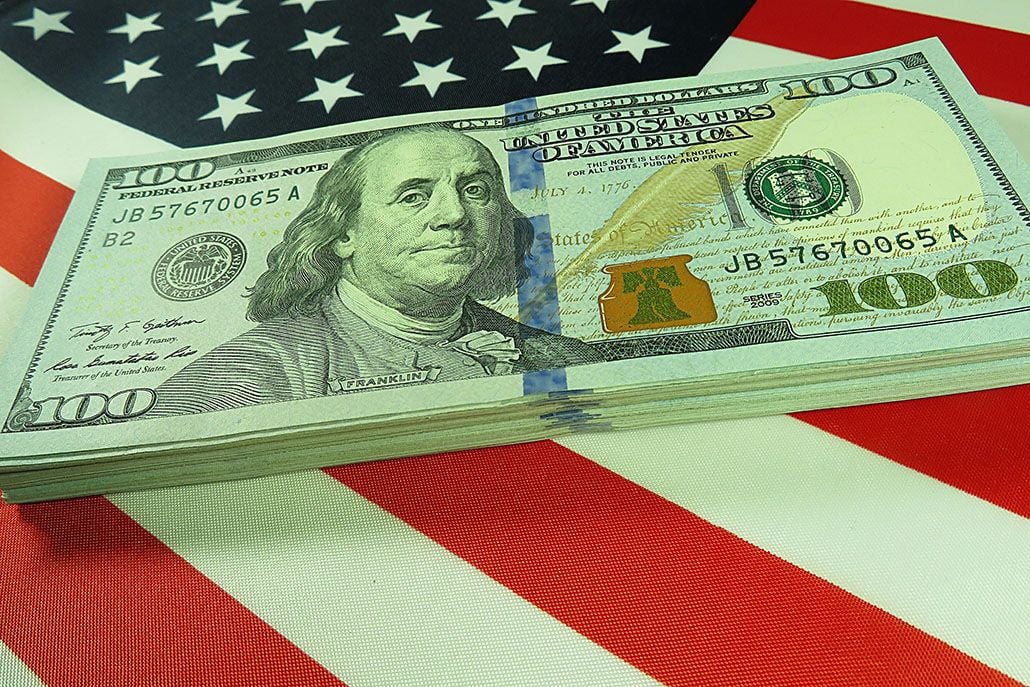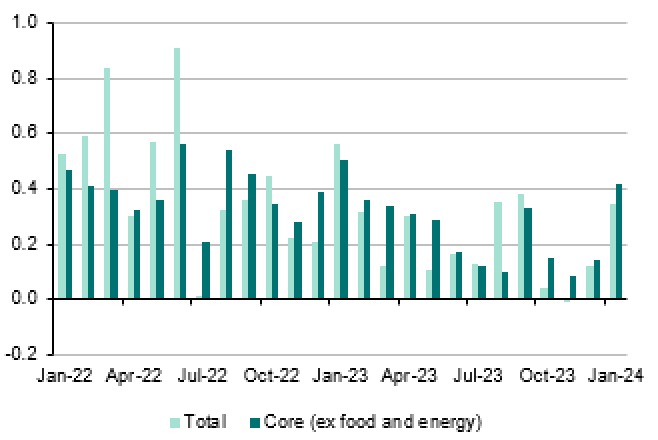PCE Inflation Rises, But Fed Still On Course for Mid-year Rate Cut Say Economists
- Written by: Gary Howes

Image © Adobe Images
Core PCE inflation - often touted as the Federal Reserve's favoured inflation gauge - rose in January by 0.4% month-on-month, double that of December, said the BEA.
Dollar exchange rates took the figure in their stride as the figure met expectations, meaning markets were spared a repeat of the rude surprise from earlier in the month when CPI inflation surprised to the upside.
The annual rate of increase fell to 2.8% in January from 2.9% previously, also meeting market expectations.
These figures, when combined with the uptick in headline CPI inflation, suggest it is too early for the Federal Reserve to cut interest rates.
"Not only does this mark the largest jump in a year, but it is also in line with an annualised inflation rate of around 5%," says Matthew Ryan, Head of Market Strategy at Ebury.
"This is clearly far too high for comfort, and Fed members will likely need to see more evidence of muted price pressures in this closely watched measure before committing to lower interest rates," he adds.
GBP to USD Transfer Savings Calculator
How much are you sending from pounds to dollars?
Your potential USD savings on this GBP transfer:
$318
By using specialist providers vs high street banks
However, economists say there is nothing in the recent data to suggest the Fed will be put off from cutting interest rates altogether.
"One bad inflation data point does not make a trend," says Ali Jaffery, an economist at CIBC Capital Markets.
Prior to today, core PCE inflation has come at or below a 2% annualised pace in six of the past seven months, according to Jaffery.
Above: PCE inflation's decline has halted. Image courtesy of DNB Markets.
Furthermore, it must be noted that the January data has been riddled with anomalies at least in part due to residual seasonality.
"Fed speakers have shown patience in response to the CPI and PPI numbers leading up to today and are wisely waiting for the dust to settle. We expect the Fed to start easing policy in the second half of this year," says Jafferey.
These PCE figures will only contribute to the becalmed state of global foreign exchange markets and suggest the low volatility environment can extend into March.
Details, (courtesy of DNB Markets):
Headline up 0.34% MOM in January, which lowered the annual rate from 2.6% YOY to 2.4% YOY.
Core inflation rose by 0.42% MOM, which reduced the annual rate from 2.9% YOY to 2.8% YOY.
Food prices rose 0.5% MOM sa, the highest reading since November 2022. The annual rate remains low and only edged up from 1.4% YOY to 1.5% YOY.
Energy prices (including gasoline) fell by 3.3% MOM and lowered the annual rate to -6.3% YOY. Gasoline prices have risen somewhat recently, indicating that the negative trend will not continue in February.
Goods inflation remains low. Durable goods inflation fell a bit further to -2.4% YOY in January, and non-durable goods inflation fell markedly from -0.5% YOY in December to -1.7% YOY in January.
Services inflation remains elevated. Services prices rose 0.6% MOM in January, keeping the annual rate unchanged at 3.9% YOY.
Shelter rose by 0.6% MOM (in line with CPI), and more than in December. According to the BLS, the uptick for the Owners’ Equivalent Rent (OER) is due to an increased weight for single-family homes within this series in January, and not a rise in rents.




